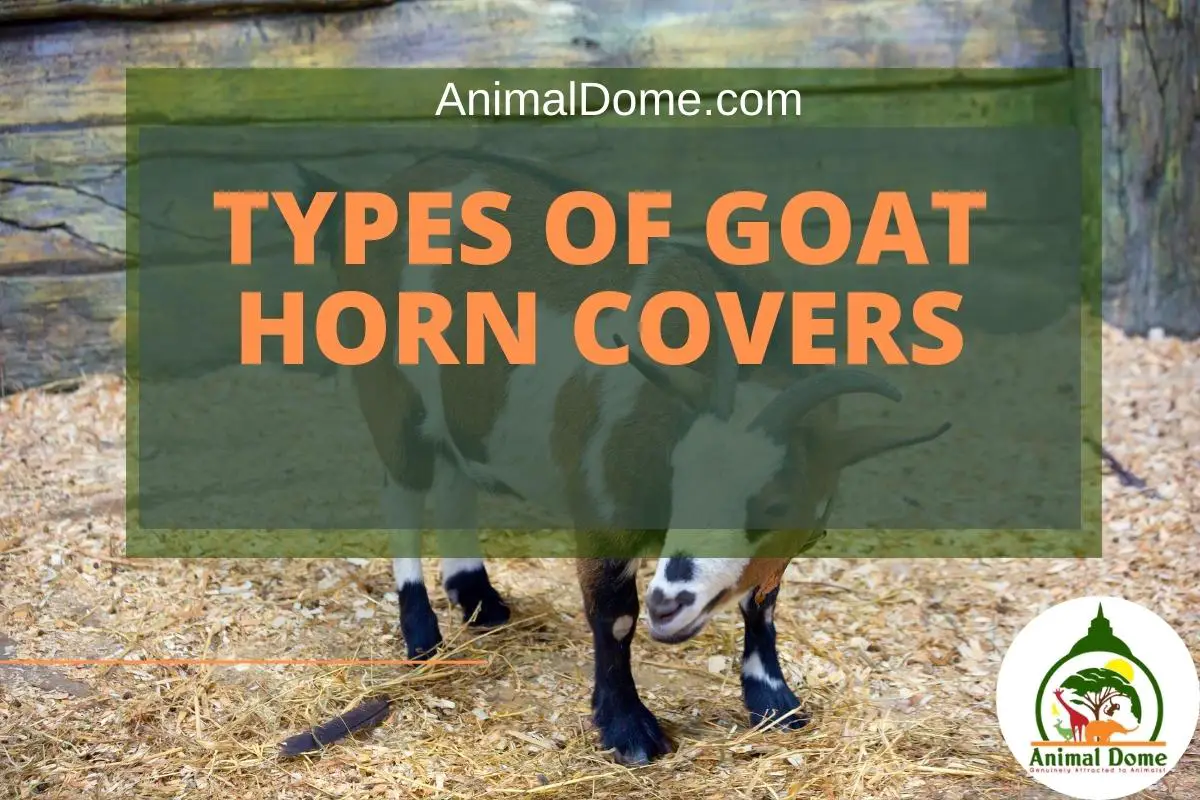Raising goats can be fun until they begin to mature, develop horns, injure one another, or even you with them. They expose their herd to bodily harm and infection through their wounds with their horns. Despite how dangerous goat horns are, you can protect your goats from these hazards by using goat horn covers on them.
Goat horn covers are materials that are made of non-toxic, sometimes perforated, and clear materials. They are used to cover goats’ horns to prevent injury to themselves, their herd, and their handlers. While there are ways to remove goats’ horns permanently or shorten them, using goat horn covers is the most humane way of addressing the problems goat horns pose.
In this article, you’ll know why you need to use goat horn covers and the types of Goat horn covers that are available for you to choose from.
What are Goat Horn Covers?
Goat horn covers are materials worn over goats’ horns to prevent injury among the herd and to their handlers. They are usually available in different sizes to suit your goats’ horn sizes, and they are easily slipped on their horns. The target of goat horn covers is to cover the most dangerous part of a goat’s horn – the tip. Hence, you’ll find different goat horn covers with different top covers.
Goats have horns on their heads for certain purposes, and removing them may expose your goats to some adversities.
The primary function of a goat’s horn is for aesthetic purposes. This is why you have different breeds of goats with their horns curved differently. Usually, the curvier they are, the more attractive they are. However, there are other functions for a goat’s horn.
Another function is the regulation of internal heat, especially for breeds of goats with thick fur, and introduced to regions with temperatures higher than they are accustomed to. Their horns help them to acclimatize faster. Also, there are theories about horns being a factor in the fertility of goats since polled (hornless) goats are generally less fertile and can produce hermaphrodites.
However, the downside to having horned goats is that they can injure one another with these parts of their body. Also, their heads can get stuck in their fences, or in feeders and drinkers, when they have their horns.
Why Use Goat Horn Covers?
Goat horn covers have one primary function; however, they can provide other functions while preserving the functions of the horns. Here are some of the reasons you should use goat horn covers for your herd.
It’s considered more humane than dehorning
Dehorning is the process of removing horns from the heads of your goats. It’s usually done at a young age, about two weeks old, with the aid of hot iron. The hot iron is pressed against the budding horns, burning the cuticle, and discouraging the continuous growth of the horns.
When you delay dehorning for a later age in your herd, it can be a dangerous practice as the artery that runs down the horn may have grown so large that you may cut it off during dehorning, and your goat may bleed to death.
A safer, and humane, option for dehorning goats is to cover the horns with goat horn covers.
It helps to prevent injury in the herd
The horns are used for communication among the herd, and it helps to cement authority among them. However, aggressive use of the horns can cause deadly injuries to goats. Such injuries and wounds can become entry points for disease pathogens, which can spread in the herd.
An effective way of preventing injuries and potential pathogenic infection outbreaks in the herd is to use goat horn covers. With the goat horn covers in place, the tip of your goats’ horns are covered, and they can’t pierce other goats’ skins.
It preserves the primary and secondary functions of the horns
The primary and secondary functions of horns are protection and heat regulation, respectively. When goats are dehorned, they may struggle with internal temperature regulation; however, its presence also exposes them to injuries.
The solution is to cover the horns with goat horn covers. They get to have their horns and regulate their body temperature.
Types of Goat Horn Covers
To cover a goat’s horns, and prevent some injuries in the herd, there are different types of goat horn covers you can use, and they vary in size.
Pool Noodles
Pool Noodles are common and cheap goat horn covers. They are available in different colors, are lightweight, and are easy to put on and remove from the horns, especially as they increase in size.
Pool Noodles are cylindrical and flexible materials usually used at swimming pools for buoyancy. They are made from polyethylene foams that are characteristically soft and long. They can travel along the curves of your goats’ horns.
Silicon Horn Protector
A silicon horn protector, as the name implies, is a goat horn cover that is made from silicon, transparent, and available in different sizes. They are not only used for goats, cows, and other horned domesticated animals but can also be used as silicon horn protectors.
They usually have rounded ends where the tip of your goats’ horns can rest. However, it is safer to ensure that the tip of your goats’ horns isn’t poking at the rounded part to avoid early tears.
Horn Wraps
Another cheap option for goat horn covers is the use of electrical tapes and duct tapes around the horns to reduce the impact of headbutting.
To apply horn wraps, you need to create some room between the horn and the tape. Place two sticks on either side of a horn and wrap the tape around the horns, with the sticks in place.
Rubber Hose
You can also use a rubber hose as a goat horn cover. You may cut some portion of the rubber hose and wear it over the horns. Ensure that the hose is big enough to fit easily over your goat’s horns.
You can also perforate the top of the hose to allow aeration and help your goat to regulate its internal temperature.
Final Thought
Different types of goat horn covers are available commercially, and you can create them from some materials you have around at home. Whichever type of goat horn cover you choose, ensure that it’s easy to wear and remove from your goat’s horns.





